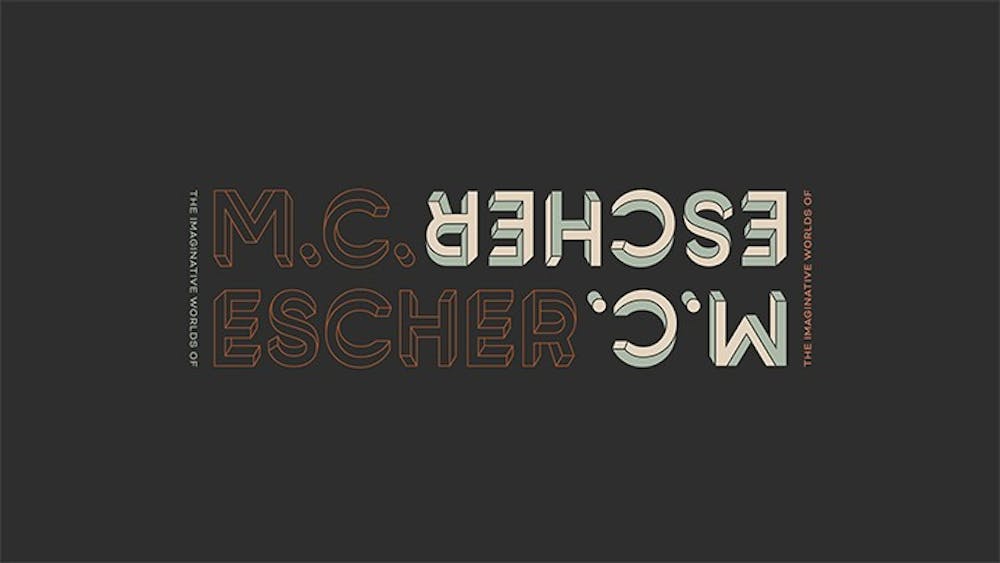An artist of the fantastical and mathematical, and the original illusionist, M.C. Escher, is an artist that encompasses all of these things and more. An exhibit of his illusion art and other works, "The Imaginative Worlds of M.C. Escher," is on display at the Columbia Museum of Art (CMA) until June 6, 2021.
Paul and Anna Belinda Firos own the largest traveling private collection of M.C. Escher's works — 138 pieces in total — which will be shown at the CMA. The Firos' collection consists of prints, woodcuts, woodblocks, wood engravings, lithographs, mezzotints and drawings.
The exhibit is broken down into six galleries: early illustration works, depictions of the natural world from landscapes to insects, 3D architecture, tessellation art, mathematical images such as geometric and crystal structures and, lastly, the famous "impossible figures." Michael Dwyer, the exhibition designer and preparator, assembled and organized this exhibit with his team.
Dwyer said a predominant theme of the last space is visual paradox.
"Your mind may tell you that what you're looking at is impossible, but your eyes can still accept it as reality," Dwyer said.
In the exhibit, there are signature Escher pieces, such as “Drawings Hands,” one of his famous lithographs, and “Eye,” one of his famous mezzotints, according to Jackie Adams, the director of art and learning at the CMA. These works will be recognizable to both fans and everyday viewers alike, she said, since his pieces are often in pop culture, constantly referenced by other figures, such as Jim Henson's "Labyrinth" featuring David Bowie, "The Simpsons" and "Inception" by Christopher Nolan.
“[The exhibit] is still going to have that really great, just, 'Wow, cool,' factor, just because of the mere fact that Escher’s work is so mind-bendingly complex," Adams said.
Jeffrey Price, an Escher scholar, art dealer and gallery owner, gave a public Facebook Live lecture Sunday to accompany the exhibit. Price said he got into Escher in the way many did before the artist was popular: through science.
Price's father founded the history of science program at Yale University and recognized Escher for the intricate mathematical complexities of his work, Price said. Ever since Price’s father brought home an Escher catalog in 1968, Price has been a devoted fan.
"I had quite a few contacts in the scientific and mathematics community. And these were people who were passionate about Escher in the 1950s, when you could write to him at his home in Holland and pay him a reasonable amount, and he would roll up a print and send it to you," Price said.
It is a marvel an artist can appeal to both ends of the spectrum, Price said, with "left-brain geeks" on one side and "far out people" on the opposite.
"The philosophical and psychedelic communities found his work irresistible from a creative point of view, and the mathematicians have found it fascinating from an analytical and mathematical point of view," Price said. "The fact that Escher prints are all very logical is, I think, a good part of their appeal because they're also so fun and creative."
According to Price, Escher called himself "a printmaker, heart and soul,” and that in Escher's early career, people would contact him for his prints and he would sell multiples of them for commission.
Escher was an isolated man who never received help with his work, according to Price, who also said Escher felt the meaning and depth of his work should be determined by the viewer.
“Escher’s language is visual," Price said. "If you were asked Escher to explain a picture, he would say something like, well, it means whatever you want it to mean, but the ideas that are captured in the picture are as complicated as anything you'll see in ... a mathematical formula that Newton illustrated. They're really complicated ideas.”

